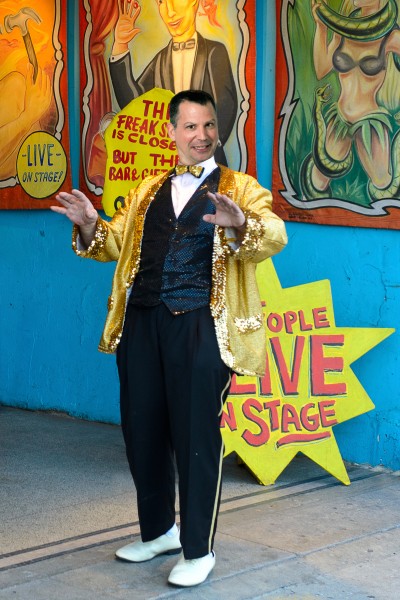Trade shows and consumer shows are an important part of the marketing mix for many companies. They present a great opportunity to launch new products, showcase your advantages, meet vendors, schmooze customers and steal ideas from—I mean, keep track of—your competitors.

Of course, there’s a downside. Cost. Trade shows can be almost criminally expensive, especially to the uninitiated. We often joke that we’re going to sell our business, buy a convention center, and make our fortune by renting beat-up plastic chairs for $300 a pop. When you consider the cost of booth space, equipment rental, shipping and travel, a single trade show can represent a big chunk of a company’s marketing budget. Follow these tips to make the most of your investment.
1. Plan ahead.
When we manage a client’s trade show presence, it’s an eight-month project. Starting six months before, we design the booth signs, banners and collateral (which can be reused across multiple shows), execute an email marketing campaign, work the trade media, create ads for the show dailies, line up analyst briefings and more. Immediately afterward, we take the names gathered at the show and perform a followup campaign. Two months later, we look at the lead conversion and determine an ROI for the event—which helps determine whether or not the client will attend the show again next year.
2. Make eye contact.
And I don’t mean look people in the eye. I mean keep your company name and any (short) meaningful content above waist level on your signage. Trade show signs have one purpose—to catch people’s attention as they walk by. They are not gigantic information sheets. Think of them as, quite literally, setting the stage for your business. Clean, dynamic, easy to understand and uncluttered—that’s a good message for any business to send. In a practical sense, anything below eye level will be blocked by furniture or booth visitors. Keep your company name high and large and people from many booths away will be able to tell who you are
3. Integrate your look.
One company I saw at a recent show clearly slapped together its display from a series of different efforts. The signage had different designs, type styles and messaging. This is more common than you might imagine. Everything you put on display—from signs to handouts—should have the same look and feel. The cost of tradeshow displays have dropped precipitously in recent years (though it’s still easy to get rooked, so shop around). Given the cost of attending the show, it’s a drop in the bucket to redo your display elements so they all match—and give a much stronger first impression.
4. Use the funnel.
The goal of a trade show is to lead qualified people to some sort of conversion—whether that’s watching a demo, making an order, or simply providing you with their contact information. The good news is, attracting a visitor into your booth is more science than art. We call it the Altitude Trade Show Funnel.
The top of the funnel is the booth backdrop. It should attract attention from a distance with the company name and a tagline that is more informative than clever—a five- to eight-word tag line that lets people know whether they’re in the market for what you have to offer.
If they nibble on the hook, the next part of the funnel is signage—often tall, narrow banners that match the design of the backdrop, placed at the front of the booth. Prospects can read these from the safety of the aisle without engaging you. Banners show a little more detail—perhaps three or four bullet points of no more than 10 words each. (Too often this signage is crammed with features, but people don’t buy features. They buy pain relief, so speak in benefits.)
If the banners strike a chord, prospects will move into your booth and into the bottom of the funnel—where you can engage them in conversation. Before they leave, always, always, always get their contact info and explicitly ask them if you can put them on your email marketing list. (This is critical for complying with CAN-SPAM email marketing laws.) Send them off with more detailed handouts and something that drives them to your website.
To wrap this up, here are a few final activities to avoid. We see these all the time at trade shows—and we have the photos to prove it!
5. Don’t play with your smart phone.
Time and time again I see the booth attendants hiding behind their smartphones and ignoring people as they walk by the booth. You’re there to do a job—gather leads—so stick the phone in your pocket and ignore the vibration. You can catch up on Facebook during breaks and after the floor closes.
6. Don’t leave the booth unattended.
Make sure someone is there at all times—and is actively paying attention. You never know when someone is going to amble up actually wanting to strike up a conversation.
7. Don’t eat in the booth.
Trade show days are long, so plan for ample coverage to allow everyone to take a break and grab a bite away from the booth. Snarfing down a cellophane-wrapped BLT in the booth is beyond unprofessional. (Breath mints are always a good idea.)
8. Don’t sleep in the booth.
Anyone who has been to a trade show knows about late nights and hefty bar tabs. At a recent show in Philadelphia, I snapped photos of not one, not two, but three different people snoozing in their booth at 10 in the morning, no doubt sleeping off hangovers. What a phenomenal waste of money—and what a damaging blow to your brand image.



